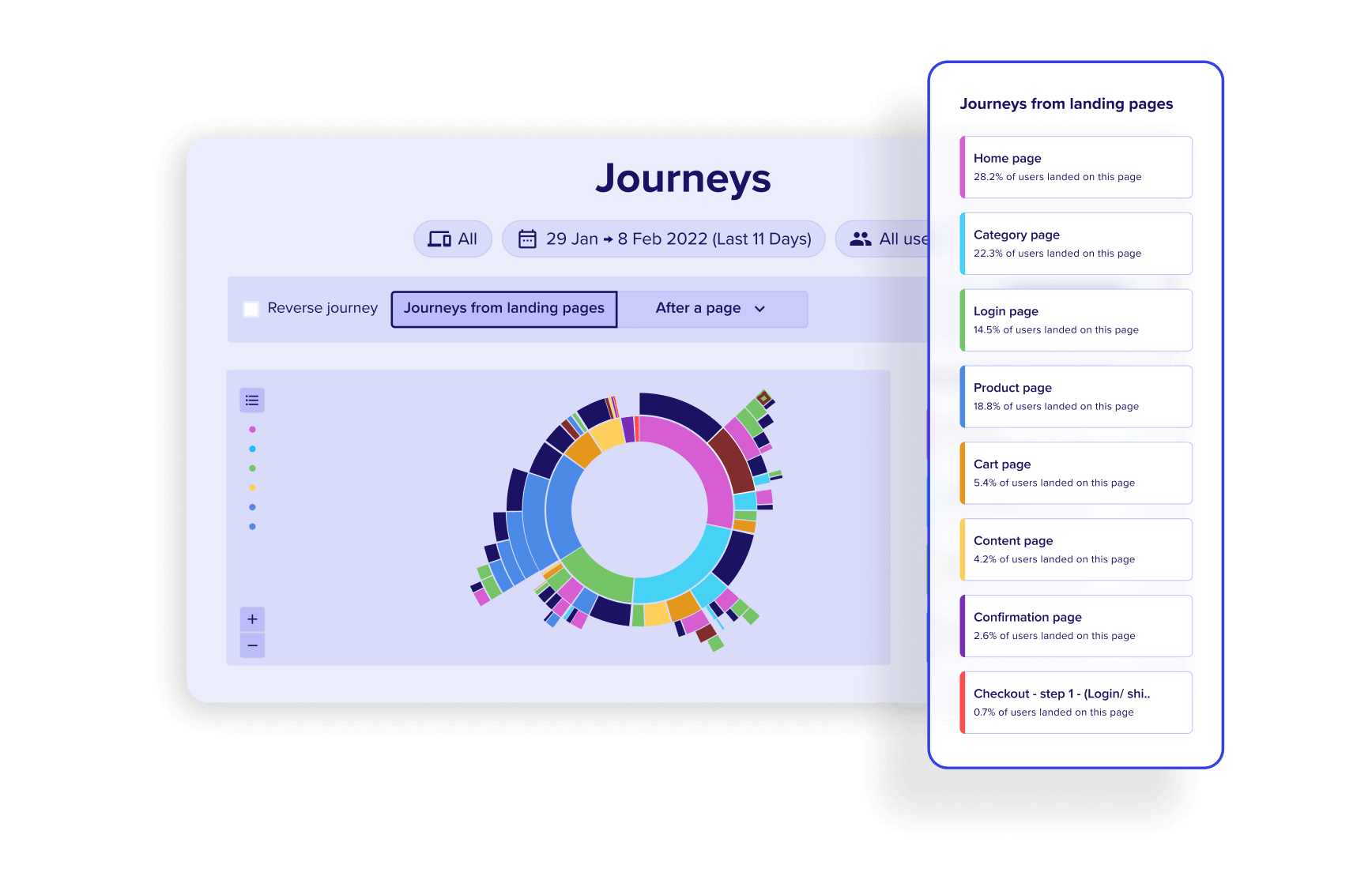
Intuitive visualizations of your customers journey.

The marketing funnel, a crucial concept in online marketing, is a systematic approach to converting business prospects into customers. Known alternatively as the sales funnel, this model outlines the theoretical user journey from the first interaction with a brand to the final purchase decision. The funnel metaphor represents a large audience at the top, with a smaller number progressing to make a purchase, demonstrating the importance of lead generation in the initial stages.
The first stage of the sales funnel is awareness, where potential customers become aware of a product or service through various online marketing strategies. This stage is crucial for lead generation, capturing the attention of a broad audience. The interest stage follows, where potential customers express an interest in a product or service. This stage involves engaging the audience with more detailed information, often through content marketing, crucial in website optimization.
The third stage, consideration, sees potential customers actively comparing your product or service to competitors. This stage involves demonstrating the unique selling proposition of the product or service, crucial for customer retention. The final stage is the purchase stage, where the customer finally decides to make a purchase. This stage involves making the purchase process as easy and hassle-free as possible, emphasizing user experience.
The funnel drop-off rate, a critical metric in website analytics, is synonymous with the conversion rate. It represents the percentage of potential customers who move through the sales funnel, from initial awareness to final purchase. This rate is calculated by dividing the number of conversions by the total number of potential customers who entered the funnel, providing valuable insights into the effectiveness of an online marketing strategy.
A high drop-off rate, or bounce rate, indicates a large proportion of potential customers are not completing the desired action, such as making a purchase or filling out a form. This could be due to various factors, including poor website design, unclear messaging, or lack of compelling offers, highlighting the need for website optimization. Conversely, a low drop-off rate suggests a high proportion of potential customers are moving through the funnel and completing the desired action. This is a positive indicator of effective online marketing and user experience strategies.
In conclusion, understanding the sales funnel and its drop-off rate is crucial for any business aiming to improve its online marketing strategy and increase its conversion rate. By carefully analyzing each stage of the funnel and identifying where drop-offs occur, businesses can take targeted actions to improve their conversion rate, enhance customer retention, and ultimately increase their bottom line.

Intuitive visualizations of your customers journey.
Funnel drop-offs can significantly impact the conversion rate of businesses, affecting both lead generation and customer retention. When potential customers disengage during the user journey of the sales funnel, businesses lose opportunities to convert these leads into sales, thereby impacting their bottom line. This disengagement often results in a higher customer acquisition cost, as businesses must invest more in online marketing strategies to attract new customers and retain existing ones.
Moreover, funnel drop-offs can lead to a decrease in customer lifetime value, affecting the website optimization process. Customers who drop off early in the sales funnel are less likely to make repeat purchases or become loyal customers. This could lead to a decline in long-term revenue and profitability. Hence, it is crucial for businesses to identify and address the causes of funnel drop-offs to ensure sustainable growth and improve the user experience.
Additionally, a high drop-off rate can negatively impact the reputation of a business. Customers who drop off may share their negative experiences with others, leading to a decrease in customer trust and brand loyalty. This is why businesses need to proactively manage funnel drop-offs, monitor website analytics, and maintain a positive brand image to attract new customers.
Monitoring drop-off rates is crucial to improving the conversion rate and optimizing the user journey. By tracking these rates, businesses can identify at which stages customers are most likely to disengage and why. This information can be used to optimize the sales funnel process, improve website optimization, and enhance the user experience.
Furthermore, monitoring drop-off rates allows businesses to measure the effectiveness of their online marketing strategies. If a particular strategy results in a high bounce rate, it may indicate that it is not resonating with the target audience. Businesses can then adjust their strategies to better meet customer needs and preferences, thereby reducing the bounce rate and increasing lead generation.
Moreover, monitoring drop-off rates can help businesses identify potential issues with their products or services. For example, if customers are dropping off at the point of purchase, it could indicate a problem with the payment process or product pricing. By identifying and addressing these issues, businesses can improve customer retention and increase sales.
Lastly, monitoring drop-off rates can aid in forecasting future sales and revenue. By understanding the factors that influence drop-off rates, businesses can make more accurate predictions and strategic decisions. This can lead to increased operational efficiency and profitability, enhancing the overall user experience.

Intuitive visualizations of your customers journey.